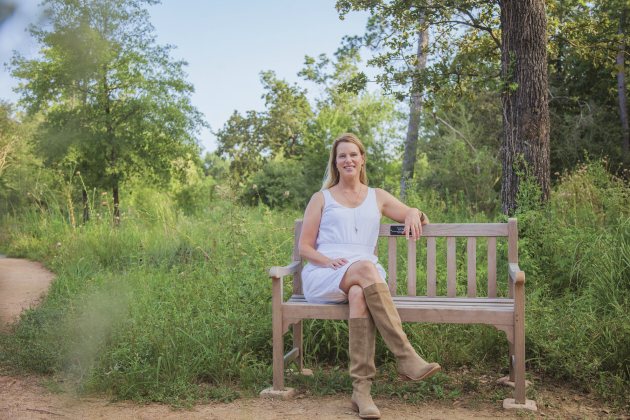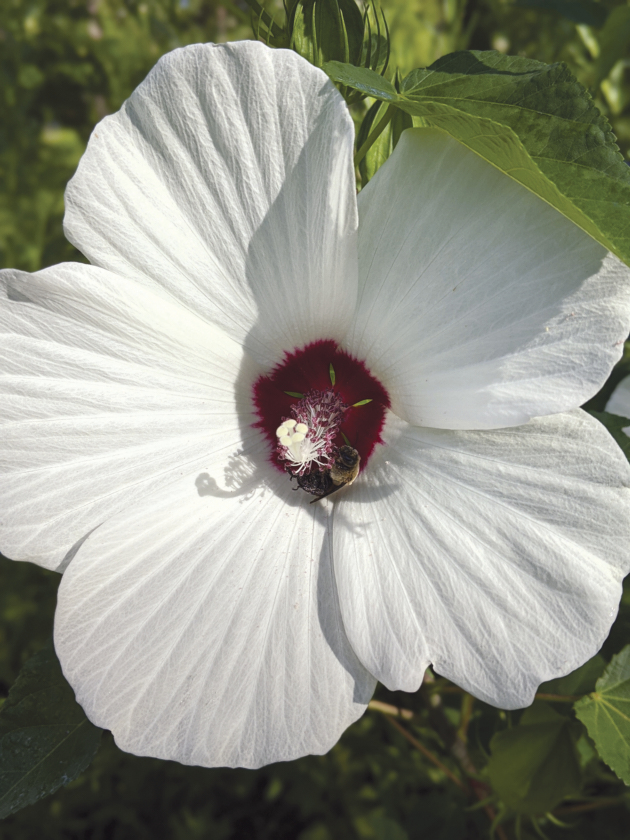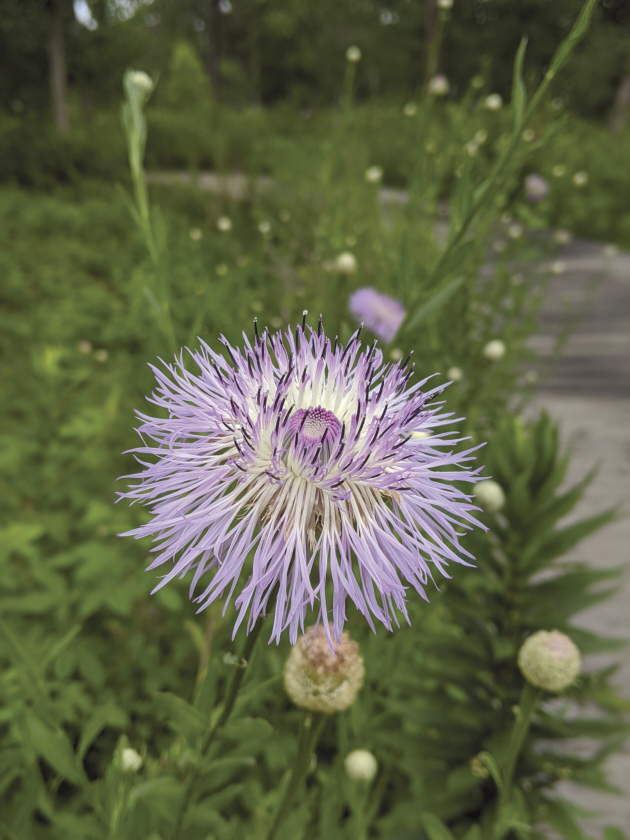Meet the Alumna Solving Conservation Problems at Houston's Arboretum

In 2017, Hurricane Harvey swept across the Gulf Coast, leaving much of the city underwater, displacing residents, and causing billions of dollars’ worth of damage. Harvey’s rain broke national records as it pounded the Houston area; one area weather station measured more than 51 inches. Pictures from that summer tell a harrowing tale: submerged cars, collapsed roofs, freeways transformed into canals.
Similarly, the Houston Arboretum and Nature Center’s 19.5 acres of partially restored oak savanna were hammered with rain. But cleared of invasive trees, the land better absorbed and infiltrated the deluge. More noticeably, three acres of previously existing prairie plants held the water for a week or more—keeping it from running off elsewhere. The prairie land “looked fine,” according to staff conservation director Emily Manderson, MA ’07. “[It was] refreshed and green and, well, happy.”
With a downtown elevation of 50 feet, hurricanes are “always a concern” in Houston, Manderson says. But seeing the land absorb water was “an exceptional example of grasslands’ capacity to handle flooding and extreme weather events.”

An arboretum is, by definition, a botanical garden devoted to trees. The Houston Arboretum and Nature Center is located on 155 acres at the western edge of one of the nation’s largest urban parks, Memorial Park, near the 610 Loop and Uptown/Galleria neighborhood. Formerly a World War I Army training camp, Memorial Park was deeded to the City of Houston in 1924 and now holds 1,466 acres. Local ecologist and educator Robert A. Vines later lobbied to carve out a section of land for a nature sanctuary, and the city council agreed in 1951. These days, the Arboretum’s dual missions are education and conservation.
“The Arboretum is not just providing a beautiful native landscape; when you go, you see how it could translate to your own yard. People can walk the trails when it is wet, on the boardwalks, and see that the prairie plants hold the water,” says Mary Anne Piacentini, president and CEO of Katy Prairie Conservancy, a Houston-area nonprofit that provided some of the Arboretum’s grass and other plant seeds.
In Harvey’s aftermath, Manderson and other Arboretum staffers delighted in the resilience they saw in the restored areas—it was a sign that the work they were putting in was making an impact. The Arboretum hasn’t always fared as well as it did in 2017. For several decades the area was composed of a maze of woodland trails and wetlands, until half the Arboretum’s tree canopy was flattened by two major climate events: 2008’s Hurricane Ike winds and 2010-11’s massive drought. While Manderson says severe weather brought huge devastation and loss to the Arboretum and the rest of Memorial Park, the staff found opportunity there. They used what they learned and were hopeful by the time Harvey blew into the city.

Brought to the Houston center as a consulting senior environmental designer with the Lady Bird Johnson Wildflower Center—Texas’ state botanical garden—in a project led by the landscape architecture firm Design Workshop in 2012, Manderson and fellow consultants worked with Arboretum executive director Deborah Markey and other staff to put together a master plan. Manderson came to landscape architecture and ecology work after studying sociology and growth on lava flows in her two previous college degrees. She realized she felt pulled toward people and nature but wanted a technical skill.
“I wanted to have an impact on the surface of the earth and improve it,” she says.
After earning a master’s in landscape architecture at UT, she became connected with the Wildflower Center through a consultancy.
Then-architecture center dean Frederick “Fritz” Steiner’s close connection with the Wildflower Center formed a bridge, Manderson says, between the program and the center. After Manderson and her fellow consultants’ site assessment found “pimples and dimples,” or higher and lower areas of land, at the Houston Arboretum, they noticed the majority of trees killed by Ike and the drought were in lower areas, the dimples. “That was a big ‘aha!’” Manderson says. “We realized: this landscape wants to be more of a grassland system, but trees moved in because of lack of fire.”
Change would be necessary. On the road to restoring the region’s three major ecosystems— Tallgrass that naturally extends from the Gulf Coast to Canada; pine woods; and post oak savanna—in the Arboretum, the staff eliminated all non-native trees under 6 feet in diameter on a 5-acre plot. To do so, they needed to gather seed from remnant prairies and their grounds and grow more than 40,000 containers of plants not readily available at nurseries. Since the partial restoration, they’ve seen nine new species on the land, including a pileated woodpecker listed by Texas Parks & Wildlife as a species of great conservation need. On 36 monitored plots of grasses and prairie flowers, Manderson says pollinators have doubled in diversity and numbers every year since 2014. The project also won two awards, the 2014 American Society of Landscape Architects Professional Honor Award, and the 2014 Boston Landscape Architects Excellence Award.

In 2016, Houston’s Harris County Flood Control District released a study finding that, during a 100-year flood event like Harvey, an acre of prairie would increase the infiltration capacity of undeveloped land by more than 3.5 inches. With root systems that extend underground 10 feet or more, native prairie grasses can absorb more water. “So, the Arboretum’s restored 19.5 acres of grassland will hold 68.6 inches more water in a 100-year flood event than the previous landscape,” Manderson says.
They realized, especially after the 2009-12 drought, they shouldn’t just put back forest and have trees die again. “It was amazing,” Piacentini says, “that the Arboretum looked to history and what plants were there beforehand.”
After Harvey, Manderson says people in Houston became more aware of the role the Gulf Coast prairie plays in absorbing water. Prairie plants sold out in the Arboretum’s spring 2020 plant sale, which was held online with curbside pickup due to COVID-19. Milkweed, the plant where monarch butterflies lay their eggs, sold out in an hour.
“People were fighting over milkweed,” Manderson says. “I was like, I feel like we just sold Rush concert tickets or something.”
Manderson says it’s gratifying to see Houstonians using the Arboretum as a way to feel more connected to their surroundings. “We are nature,” she says. “We’re not separate.”
Portrait of Emily Manderson by Summer Miles; all other photos by Emily Manderson





